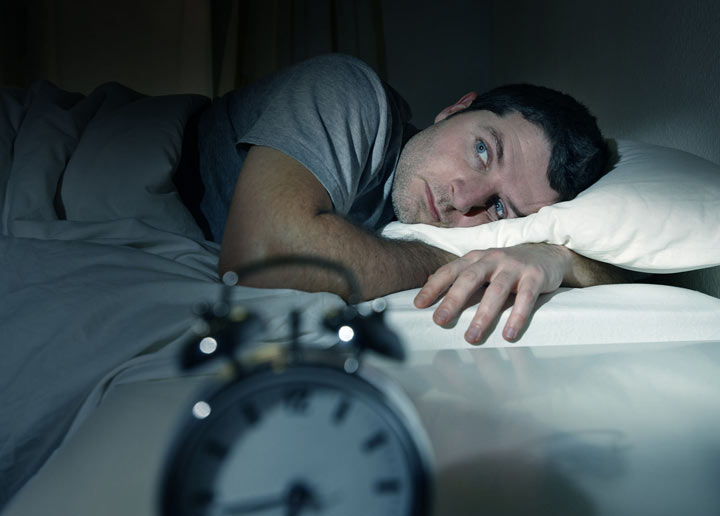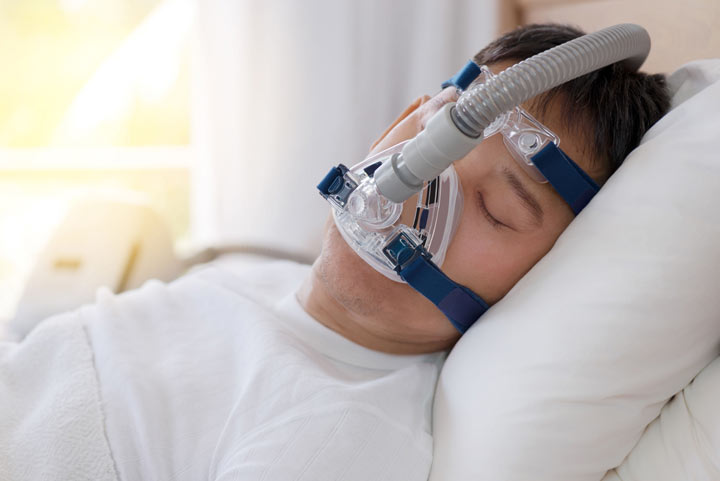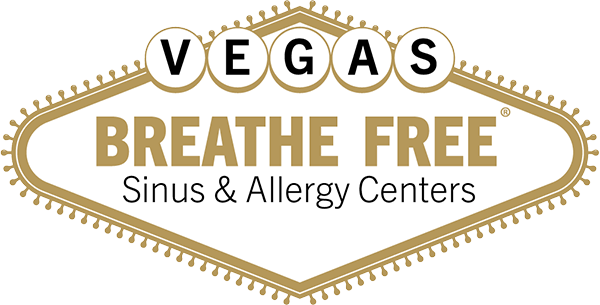Sleep apnea is very common in the United States and has become more prevalent as Americans become more obese. The impact of sleep apnea is very significant for individuals and for society. With sleep apnea, there is a much higher risk of heart problems, lung problems, diabetes, heart attacks, strokes, and sudden death. Also, there may be reduced performance at work or in school, and poor concentration for tasks due to being chronically fatigued.
Sleep Apnea
Sleep apnea is a condition where you stop breathing during sleep. The word “apnea” means “not breathing.” When you stop breathing during sleep, your oxygen level falls. When the level falls low enough, your brain triggers a response and you wake up and breathe. You may wake up completely or just partially. When this occurs several times a night, the amount of sleep gets reduced such that when you wake up, you are tired. Some people with sleep apnea feel as if they do not get any sleep at all, and others fall asleep very easily. This can be dangerous, such as when you are driving a car or you are a pilot of a plane.


There are two main types of sleep apnea, central and obstructive. Central sleep apnea occurs when you are asleep and the brain does not send the signal to the lungs to breathe. This is usually treated with medications to help stimulate breathing.
Diagnosing sleep apnea is usually done by a sleep test. A sleep testing center has a bedroom and bed where the person goes and sleeps. Testing is done on the person while they sleep. Multiple things are recorded – oxygen levels, breathing efforts, heart rate, etc.
Obstructive sleep apnea is much more common than central sleep apnea. In these patients, the brain sends the signal to breathe, but there is blockage (hence, the word obstructive) in the movement of air into the lungs. If you observe a person with obstructive sleep apnea, you will see them make the effort to breathe (the chest will rise and fall), but the air is just not moving in or out. If there is no breathing for a while, the brain will send an awakening response and a stronger breathing signal. Then, there is usually some gasping for air when the obstruction is overcome. Some patients repeat this process all night.
The obstructive sleep apnea blockage can be either in the throat or the nose. Blockages in the throat can be due to enlarged tonsils, a large uvula (the thing that hangs down in the back of your throat), a large tongue, or a narrowed throat passage. Also, there are some body-position-related changes when you lie down; the tongue can fall back and block breathing or muscles that keep the throat open may not do so.
Blockages in the nose can be from a deviated septum, enlarged turbinates, a narrowed nasal valve, or enlarged swell bodies. Allergies, sinus problems, or nasal trauma can contribute to all of these blockages.
There are three main treatments for sleep apnea. First, if the person is overweight, lose the weight. Get down to ideal body mass. This does not directly affect any blockages and your throat size does not change with weight loss, but a smaller person needs less oxygen flowing through the same sized throat.
The second treatment for sleep apnea is wearing a device to push air past the obstruction. This is called Continuous Positive Airway Pressure, or CPAP. A mask is fitted over the nose or mouth (or both) and a machine pushes air into the person. A person uses CPAP nightly. The CPAP pushes air in and overcomes the obstruction or blockages and keeps your throat open. This stops your oxygen level from falling, and you stay in a deeper sleep all night and feel rested in the morning.

Blockages in the nose or throat can be removed to eliminate the obstruction and cure the sleep apnea. Tonsils may be removed, the uvula may be removed, and extra skin in the throat can also be removed. One can fix a deviated septum, trim enlarged turbinates, fix a narrowed nasal valve, and trim enlarged swell bodies. Throat surgery is often very painful to have and often takes about a week to recover from; nasal repairs only take a day or two.
